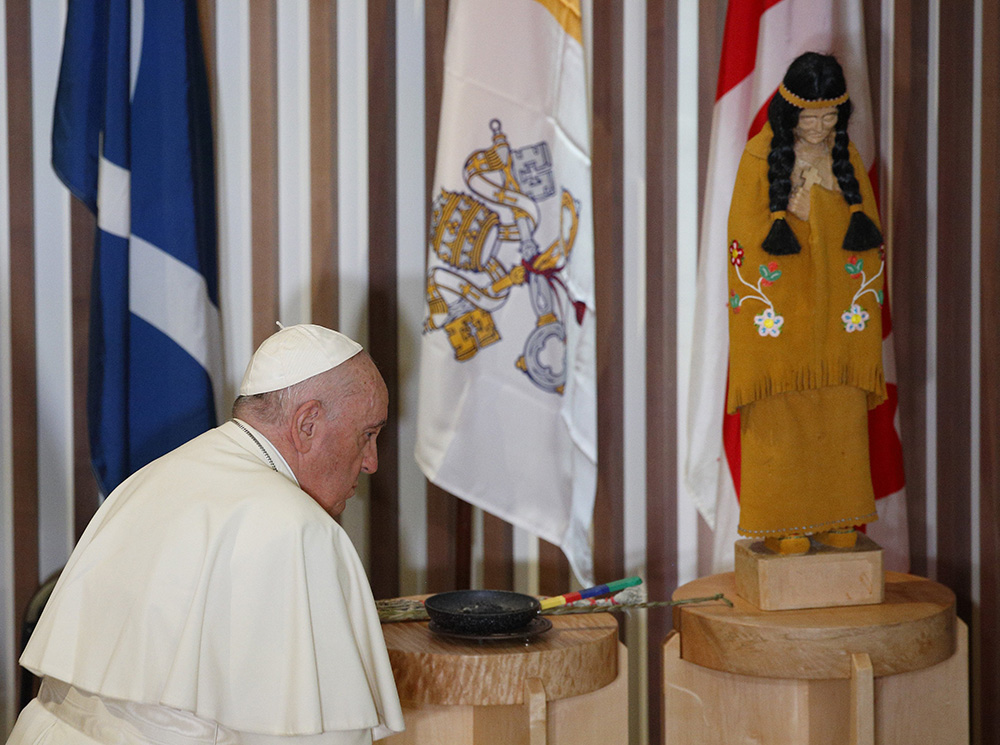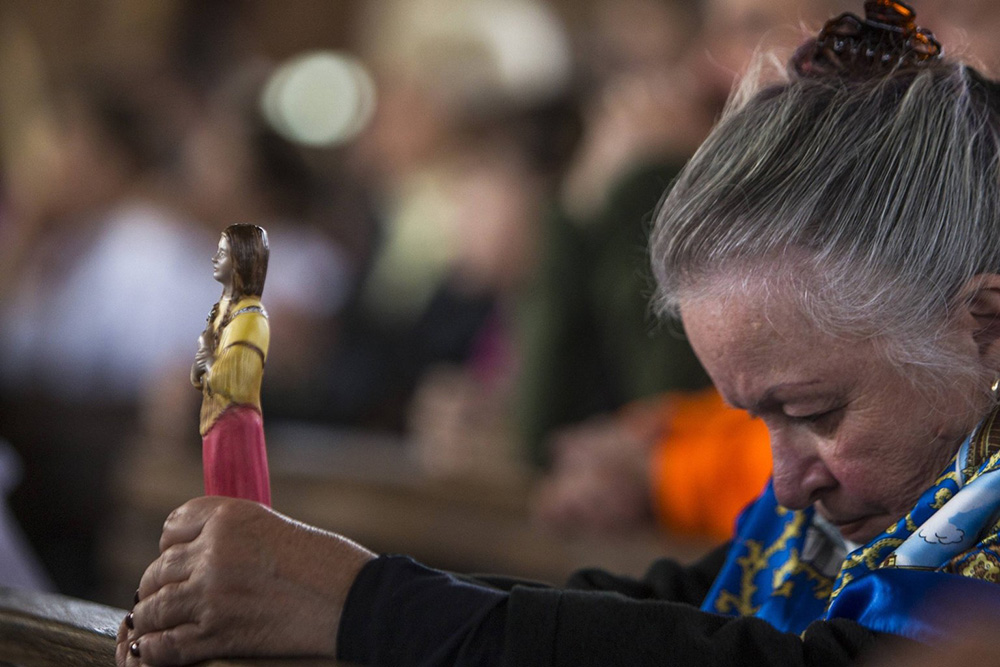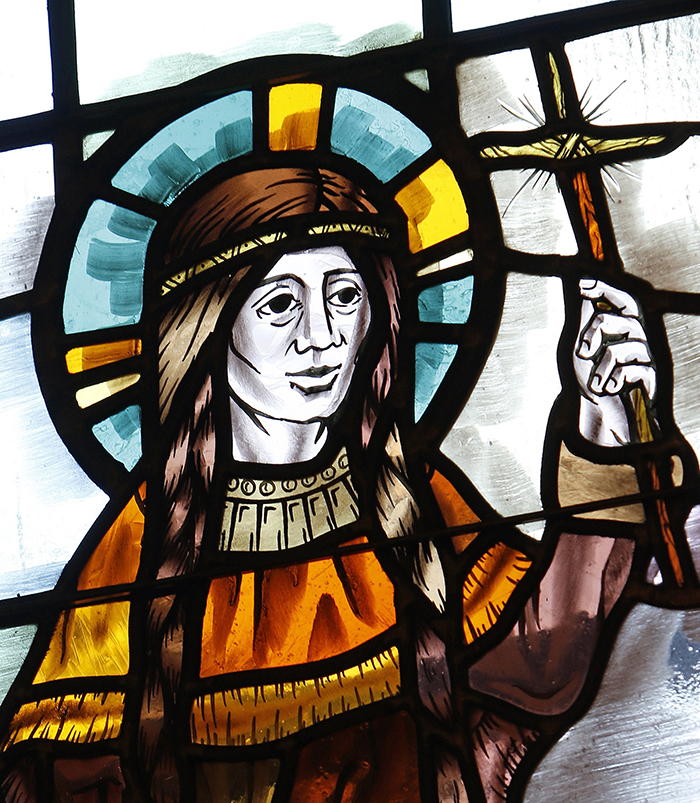
PROSPECT HEIGHTS — Reconciliation. It may be achieved with the guidance of a saint.
Modern efforts by the Catholic Church to reconcile with United States indigenous people are often overshadowed by historical crimes against natives in the New World, with many recent headlines focusing on the Church’s role in boarding schools across North America.
However, a New York-born Catholic saint has served as a guide to intercultural relations and provided the Native American Catholics a saint that embodies their history.
St. Kateri Tekakwitha, canonized on Oct. 21, 2012, by Pope Benedict XVI, is the first and only native North American saint in the United States. She is a reminder that “at the base of openness to the relationship is having open hearts,” said Shinnecock tribe member Danielle Hopson Begun.
Kateri Tekakwitha was born in 1656 in the Mohawk village of Ossernenon, now known as Auriesville, New York. When she was 4 years old, a smallpox outbreak hit the village. The disease scarred her skin and killed her parents, leaving her an orphan.
At age 19, Kateri converted to Catholicism, and according to legend, was very devout and often practiced self-mutilation in her expression of devotion. Five years after she converted, she died on April 17, 1680, at age 24.
Stories of miracles connected to her intercession began emerging immediately after her death, according to Melinda Bramble, director of operations at the Saint Kateri Tekakwitha National Shrine and Historic Site.
Members of the community would take dirt from her grave to people who were ill, because she was seen as a figure of healing. According to legend, the scarring caused by her smallpox disappeared after her death.
During her life, she was often met with resistance for having converted to Catholicism.

“To me, one of the most important things to remember about her, and something I try to take as a personal example, is that Christ-like love, that willingness to extend help to people, whether you think they deserve it or not,” Bramble said.
The Saint Kateri Tekakwitha National Shrine and Historic Site was founded in 1938 to bring the saint’s story to life and preserve that history on the grounds where she lived for most of her life.
In the decades since, through the guidance of the saint, members of the nonprofit organization that runs the site — the only one in the U.S. with a fully excavated Iriquois village — attempt reconciliation with the local traditional Mohawk community a few miles away.
Those efforts have included a joint burial service, in which Mohawk remains recovered from the excavation of the village have been laid to rest in both Catholic and Mohican tradition.
Approximately 20% of Native Americans residing in the United States are Catholic, according to the U.S. Conference of Catholic Bishops, composing around 3.5% of all Catholics in the country.
A documentary released two years ago by the Knights of Columbus, who manage the Shrine of Our Lady of Martyrs, explores the history of faith among Native Americans.
“Enduring Faith: The Story of Native American Catholics” tells the story of the arrival of the Gospel to the United States, the enduring faith among Catholic indigenous groups, and the need for reconciliation between indigenous tribes and the Church.
Eric Ulibarri, who lives on the Pueblo of Pojoaque Reservation in New Mexico, is among the Native American Catholics who speaks about his faith in the documentary. He said St. Kateri is held in high esteem by his family.
“Being a Native American saint is just something that our children look up to. They see the similarities in St. Kateri in themselves … they see the value of St. Kateri in their lives,” he said in the documentary.

Hopsun Begun, a Shinnecock kelp farmer on Long Island, discussed the steps being taken with the Sisters of St. Joseph, upon whose land in the Hamptons they maintain their kelp farms, toward reciprocation.
The relationship she and five other climate-conscious women have with the sisters has the blessing of the Shinnecock Tribe and is one “about connection and trust.
“It’s potentially a complicated relationship,” Begun conceded. “There is history with boarding schools, and trust needed to be built. We are, and have been willing, to have open hearts.”
